Vietnamese - Chữ Nôm 陰 陽
In Chinese philosophy, yin and yang (also yin–yang or yin yang, 陰陽 yīnyáng "dark–bright") describe how seemingly opposite or contrary forces may actually be complementary, interconnected,
and interdependent in the natural world, and how they may give rise to
each other as they interrelate to one another. Many tangible dualities (such as light and dark,
fire and water, expanding and contracting) are thought of as physical manifestations of the duality symbolized by yin and yang. This duality
lies at the origins of many branches of classical Chinese science and philosophy, as well as being a primary guideline of traditional Chinese medicine, and a central principle of different forms of Chinese martial arts and exercise, such as baguazhang, taijiquan (t'ai chi), and qigong (Chi Kung), as well as appearing in the pages of the I Ching.
In Taoist
metaphysics, distinctions between good and bad, along with other dichotomous moral judgments, are perceptual, not real; so, the duality of yin and yang is an indivisible whole. In the ethics of Confucianism on the other hand, most notably in the philosophy of Dong Zhongshu (c. 2nd century BC), a moral dimension is attached to the idea of yin and yang.
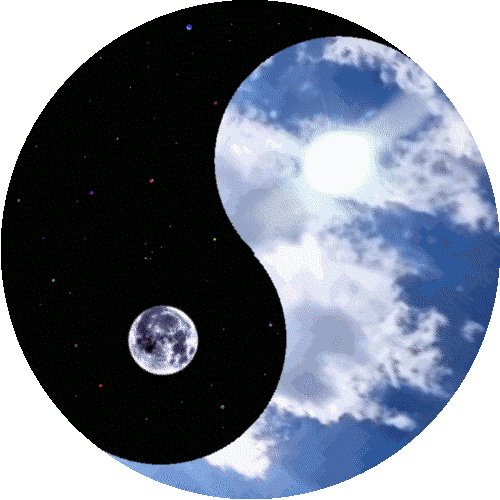
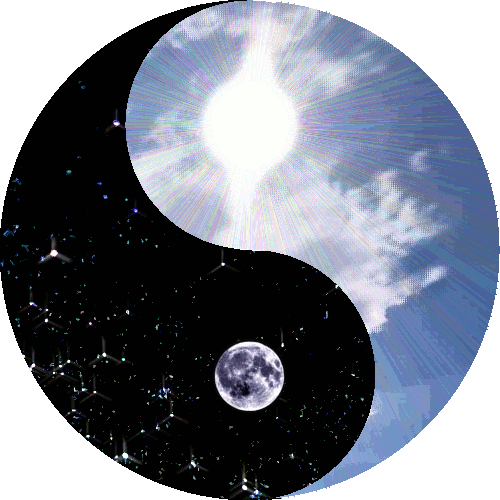 Loanwords
Loanwords
English yin, yang, and yin-yang are familiar loanwords of Chinese origin.
The Oxford English Dictionary defines:
yin (jɪn) Also Yin, Yn. [Chinese yīn shade, feminine; the moon.]
a. In Chinese philosophy, the feminine or negative principle (characterized by dark, wetness, cold, passivity, disintegration, etc.) of the two opposing cosmic forces into which creative energy divides and whose fusion in physical matter brings the phenomenal world into being. Also attrib. or as adj., and transf. Cf. yang.
b. Comb., as yin-yang, the combination or fusion of the two cosmic forces; freq. attrib., esp. as yin-yang symbol, a circle divided by an S-shaped line into a dark and a light segment, representing respectively yin and yang, each containing a 'seed' of the other.
yang (jæŋ) Also Yang. [Chinese yáng yang, sun, positive, male genitals.]
a. In Chinese philosophy, the masculine or positive principle (characterized by light, warmth, dryness, activity, etc.) of the two opposing cosmic forces into which creative energy divides and whose fusion in physical matter brings the phenomenal world into being. Also attrib. or as adj. Cf. yin.
b. Comb.: yang-yin = yin-yang s.v. yin b.
 History
History
Needham discusses Yin and Yang together with Five Elements as part of the School of Naturalists. He says that it would be proper to begin with Yin and Yang before Five Elements because the former: "lay, as it were, at a deeper level in Nature, and were the most ultimate principles of which the ancient Chinese could conceive. But it so happens that we know a good deal more about the historical origin of the Five-Element theory than about that of the Yin and the Yang, and it will therefore be more convenient to deal with it first." He then discusses Zou Yan (鄒衍; 305 – 240 BC) who is most associated with these theories. Although Yin and Yang are not mentioned in any of the surviving documents of Zou Yan, his school was known as the Yin Yang Jia (Yin and Yang School) Needham concludes "There can be very little doubt that the philosophical use of the terms began about the beginning of the -4th century, and that the passages in older texts which mention this use are interpolations made later than that time."
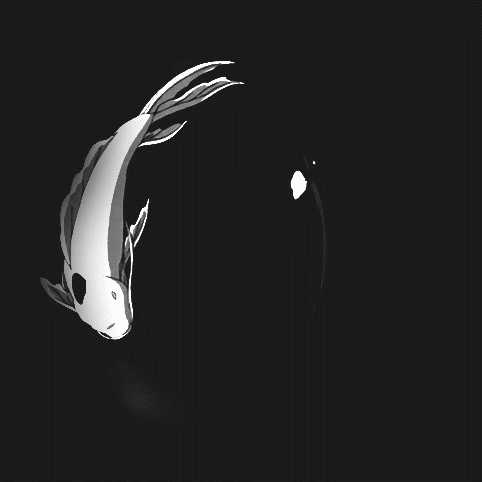 Nature
Nature
In Daoist philosophy, dark and light, yin and yang, arrive in the Tao Te Ching at chapter 42. It becomes sensible from an initial quiescence or emptiness (wuji, sometimes symbolized by an empty circle), and continues moving until quiescence is reached again. For instance, dropping a stone in a calm pool of water will simultaneously raise waves and lower troughs between them, and this alternation of high and low points in the water will radiate outward until the movement dissipates and the pool is calm once more. Yin and yang thus are always opposite and equal qualities. Further, whenever one quality reaches its peak, it will naturally begin to transform into the opposite quality: for example, grain that reaches its full height in summer (fully yang) will produce seeds and die back in winter (fully yin) in an endless cycle.
It is impossible to talk about yin or yang without some reference to the opposite, since yin and yang are bound together as parts of a mutual whole (for example, there cannot be the bottom of the foot without the top). A way to illustrate this idea is to postulate the notion of a race with only men or only women; this race would disappear in a single generation. Yet, men and women together create new generations that allow the race they mutually create (and mutually come from) to survive. The interaction of the two gives birth to things, like manhood. Yin and yang transform each other: like an undertow in the ocean, every advance is complemented by a retreat, and every rise transforms into a fall. Thus, a seed will sprout from the earth and grow upwards towards the sky—an intrinsically yang movement. Then, when it reaches its full potential height, it will fall. Also, the growth of the top seeks light, while roots grow in darkness.
Certain catchphrases have been used to express yin and yang complementarity:
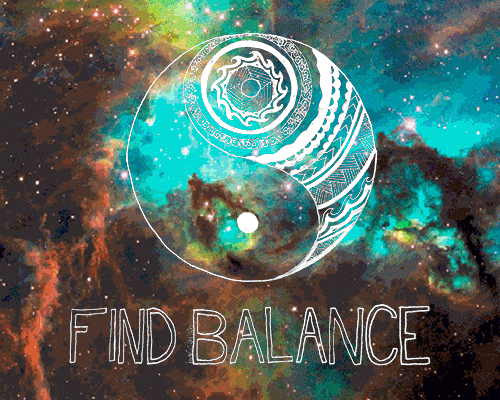 Symbolism and importance
Symbolism and importance
Yin is the black side with the white dot in it, and yang is the white side with the black dot in it. The relationship between yin and yang is often described in terms of sunlight playing over a mountain and a valley. Yin (literally the 'shady place' or 'north slope') is the dark area occluded by the mountain's bulk, while yang (literally the 'sunny place' or 'south slope') is the brightly lit portion. As the sun moves across the sky, yin and yang gradually trade places with each other, revealing what was obscured and obscuring what was revealed.
Yin is characterized as slow, soft, yielding, diffuse, cold, wet, and passive; and is associated with water, earth, the moon, femininity, and nighttime.
Yang, by contrast, is fast, hard, solid, focused, hot, dry, and active; and is associated with fire, sky, the sun, masculinity and daytime.
The Yin-Yang symbol, having no "officially standardized" rendition, has been the basis of much artistic variation, most of it "frivolous" (that is, "merely" artistic, with no philosophical/mystical meaning, e.g., tattoos).
Yin and yang also applies to the human body. In traditional Chinese medicine good health is directly related to the balance between yin and yang qualities within oneself. If yin and yang become unbalanced, one of the qualities is considered deficient or has vacuity.
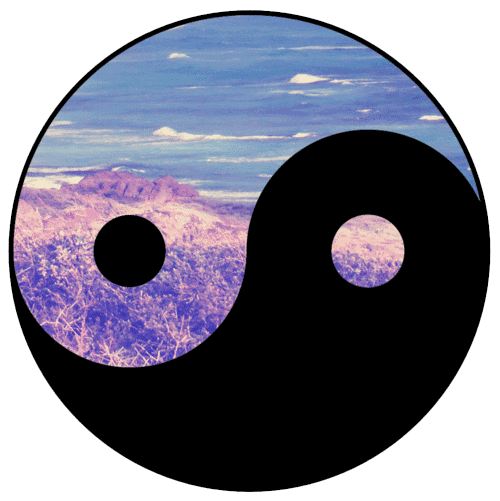 Characters
Characters
The Traditional Chinese characters 陰 and 陽 for the words yīn and yáng are both classified as radical-phonetic characters, combining the semantically significant "mound; hill" radical 阝 or 阜 with the phonetic indicators yīn 侌 and yáng 昜. The first phonetic yīn 侌 "cloudy" ideographically combines jīn 今 "now; present" and yún 云 "cloud", denoting the "今 presence of 云 clouds". The second phonetic yáng 昜 "bright" originally pictured 日 the "sun" with 勿 "rays coming down".
This phonetic is expanded with the "sun" radical into yáng 暘 "rising sun; sunshine". The "mound; hill" radical 阝full forms semantically specify yīn 陰 "shady/dark side of a hill" and yáng 陽 "sunny/light side of a hill".
The Simplified Chinese characters 阴 and 阳 for yīn and yáng combine the same "hill" radical 阝 with the non-phonetic yuè 月 "moon" and rì 日 "sun", graphically denoting "shady side of a hill" and "sunny side of a hill". Compare the Classical Chinese names (which contain tài 太 "great") for these two heavenly bodies: Tàiyīn 太陰 "moon" and Tàiyáng 太陽 "sun".
https://en.wikipedia.org/wiki/Yin_and_yang
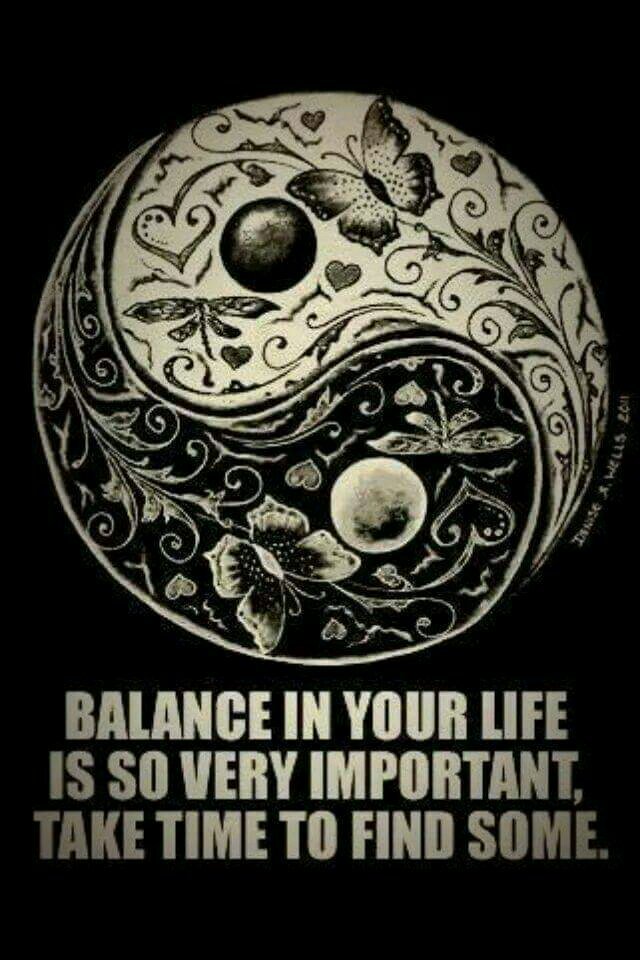

x
Duality is found in many belief systems, but Yin and Yang are parts of a Oneness that is also equated with the Tao. A term has been coined dualistic-monism or dialectical monism.
Yin and yang can be thought of as complementary (rather than opposing) forces that interact to form a dynamic system in which the whole is greater than the assembled parts. Everything has both yin and yang aspects (for instance, shadow cannot exist without light). Either of the two major aspects may manifest more strongly in a particular object, depending on the criterion of the observation. The yin yang (i.e. taijitu symbol) shows a balance between two opposites with a portion of the opposite element in each section.
Meanings
Yin and yang are semantically complex words.
Yin 陰 or 阴 Noun ① [philosophy] negative/passive/female principle in nature ② Surname Bound morpheme ① the moon ② shaded orientation ③ covert; concealed; hidden ④ ⑦ negative ⑧ north side of a hill ⑨ south bank of a river ⑩ reverse side of a stele ⑪in intaglio Stative verb ① overcast ② sinister; treacherous
Yang 陽 or 阳 Bound morpheme
① [Chinese philosophy] positive/active/male principle in nature ② the sun ④ in relief ⑤ open; overt ⑥ belonging to this world ⑦ [linguistics] masculine ⑧ south side of a hill ⑨ north bank of a river
The compound yinyang 陰陽 or 阴阳 means "yin and yang; opposites; ancient Chinese astronomy; occult arts; astrologer; geomancer; etc.".
The sinologist Rolf Stein etymologically translates Chinese yin 陰 "shady side (of a mountain)" and yang 陽 "sunny side (of a mountain)" with the uncommon English geographic terms ubac "shady side of a mountain" and adret "sunny side of a mountain" (which are of French origin).

English yin, yang, and yin-yang are familiar loanwords of Chinese origin.
The Oxford English Dictionary defines:
yin (jɪn) Also Yin, Yn. [Chinese yīn shade, feminine; the moon.]
a. In Chinese philosophy, the feminine or negative principle (characterized by dark, wetness, cold, passivity, disintegration, etc.) of the two opposing cosmic forces into which creative energy divides and whose fusion in physical matter brings the phenomenal world into being. Also attrib. or as adj., and transf. Cf. yang.
b. Comb., as yin-yang, the combination or fusion of the two cosmic forces; freq. attrib., esp. as yin-yang symbol, a circle divided by an S-shaped line into a dark and a light segment, representing respectively yin and yang, each containing a 'seed' of the other.
yang (jæŋ) Also Yang. [Chinese yáng yang, sun, positive, male genitals.]
a. In Chinese philosophy, the masculine or positive principle (characterized by light, warmth, dryness, activity, etc.) of the two opposing cosmic forces into which creative energy divides and whose fusion in physical matter brings the phenomenal world into being. Also attrib. or as adj. Cf. yin.
b. Comb.: yang-yin = yin-yang s.v. yin b.

Needham discusses Yin and Yang together with Five Elements as part of the School of Naturalists. He says that it would be proper to begin with Yin and Yang before Five Elements because the former: "lay, as it were, at a deeper level in Nature, and were the most ultimate principles of which the ancient Chinese could conceive. But it so happens that we know a good deal more about the historical origin of the Five-Element theory than about that of the Yin and the Yang, and it will therefore be more convenient to deal with it first." He then discusses Zou Yan (鄒衍; 305 – 240 BC) who is most associated with these theories. Although Yin and Yang are not mentioned in any of the surviving documents of Zou Yan, his school was known as the Yin Yang Jia (Yin and Yang School) Needham concludes "There can be very little doubt that the philosophical use of the terms began about the beginning of the -4th century, and that the passages in older texts which mention this use are interpolations made later than that time."

In Daoist philosophy, dark and light, yin and yang, arrive in the Tao Te Ching at chapter 42. It becomes sensible from an initial quiescence or emptiness (wuji, sometimes symbolized by an empty circle), and continues moving until quiescence is reached again. For instance, dropping a stone in a calm pool of water will simultaneously raise waves and lower troughs between them, and this alternation of high and low points in the water will radiate outward until the movement dissipates and the pool is calm once more. Yin and yang thus are always opposite and equal qualities. Further, whenever one quality reaches its peak, it will naturally begin to transform into the opposite quality: for example, grain that reaches its full height in summer (fully yang) will produce seeds and die back in winter (fully yin) in an endless cycle.
It is impossible to talk about yin or yang without some reference to the opposite, since yin and yang are bound together as parts of a mutual whole (for example, there cannot be the bottom of the foot without the top). A way to illustrate this idea is to postulate the notion of a race with only men or only women; this race would disappear in a single generation. Yet, men and women together create new generations that allow the race they mutually create (and mutually come from) to survive. The interaction of the two gives birth to things, like manhood. Yin and yang transform each other: like an undertow in the ocean, every advance is complemented by a retreat, and every rise transforms into a fall. Thus, a seed will sprout from the earth and grow upwards towards the sky—an intrinsically yang movement. Then, when it reaches its full potential height, it will fall. Also, the growth of the top seeks light, while roots grow in darkness.
Certain catchphrases have been used to express yin and yang complementarity:
- The bigger the front, the bigger the back.
- Illness is the doorway to health.
- Tragedy turns to comedy.
- Disasters turn out to be blessings.

Yin is the black side with the white dot in it, and yang is the white side with the black dot in it. The relationship between yin and yang is often described in terms of sunlight playing over a mountain and a valley. Yin (literally the 'shady place' or 'north slope') is the dark area occluded by the mountain's bulk, while yang (literally the 'sunny place' or 'south slope') is the brightly lit portion. As the sun moves across the sky, yin and yang gradually trade places with each other, revealing what was obscured and obscuring what was revealed.
Yin is characterized as slow, soft, yielding, diffuse, cold, wet, and passive; and is associated with water, earth, the moon, femininity, and nighttime.
Yang, by contrast, is fast, hard, solid, focused, hot, dry, and active; and is associated with fire, sky, the sun, masculinity and daytime.
The Yin-Yang symbol, having no "officially standardized" rendition, has been the basis of much artistic variation, most of it "frivolous" (that is, "merely" artistic, with no philosophical/mystical meaning, e.g., tattoos).
Yin and yang also applies to the human body. In traditional Chinese medicine good health is directly related to the balance between yin and yang qualities within oneself. If yin and yang become unbalanced, one of the qualities is considered deficient or has vacuity.

The Traditional Chinese characters 陰 and 陽 for the words yīn and yáng are both classified as radical-phonetic characters, combining the semantically significant "mound; hill" radical 阝 or 阜 with the phonetic indicators yīn 侌 and yáng 昜. The first phonetic yīn 侌 "cloudy" ideographically combines jīn 今 "now; present" and yún 云 "cloud", denoting the "今 presence of 云 clouds". The second phonetic yáng 昜 "bright" originally pictured 日 the "sun" with 勿 "rays coming down".
This phonetic is expanded with the "sun" radical into yáng 暘 "rising sun; sunshine". The "mound; hill" radical 阝full forms semantically specify yīn 陰 "shady/dark side of a hill" and yáng 陽 "sunny/light side of a hill".
The Simplified Chinese characters 阴 and 阳 for yīn and yáng combine the same "hill" radical 阝 with the non-phonetic yuè 月 "moon" and rì 日 "sun", graphically denoting "shady side of a hill" and "sunny side of a hill". Compare the Classical Chinese names (which contain tài 太 "great") for these two heavenly bodies: Tàiyīn 太陰 "moon" and Tàiyáng 太陽 "sun".
https://en.wikipedia.org/wiki/Yin_and_yang







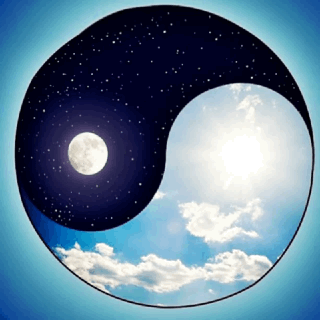
No comments:
Post a Comment